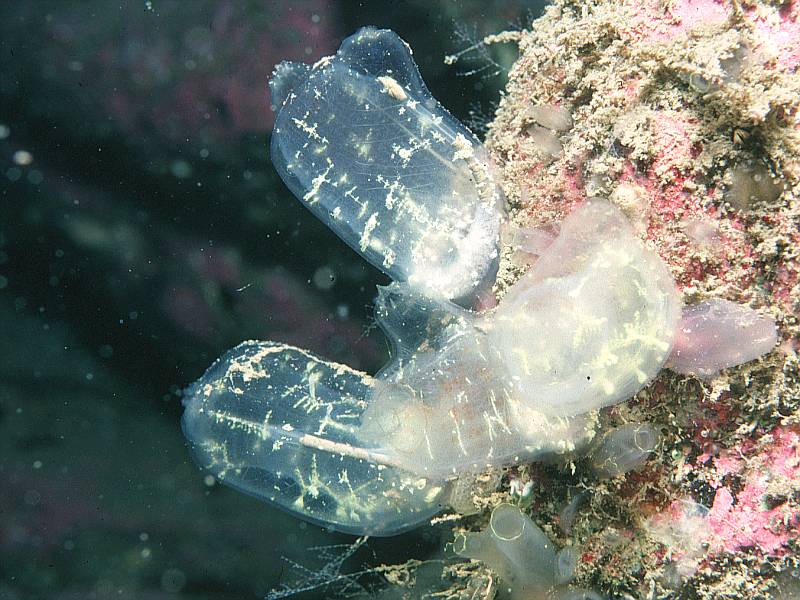| TUNICATA : Phlebobranchia : Corellidae | SEA SQUIRTS |
Corella parallelogramma (O F M�ller, 1776)
Gas Mantle Ascidian
 |
| Corella parallelogramma |
Description: Body fairly rectangular in shape from the side, laterally flattened and attached by the base. The test is thin and transparent, so that the branchial sac and gut are clearly visible in the living animal. The branchial sac is usually marked with yellow and/or red pigment flecks in a criss-cross pattern. The intestine is a grey tube running along the base and up the side of the body towards the atrial siphon. The atrial siphon is usually short, but may be very long. 30-50mm tall x 20-30mm broad.
Habitat: Found in a wide range of habitats, from shallow water to 200m. Grows on rocks, shells, stones etc. Seems to like a fair amount of water movement and occurs in places with quite strong currents or swell.
Distribution: All coasts of the British Isles, north to Norway and south to the Mediterranean.
Similar Species: Ascidiella scabra can be partially transparent and can have coloured markings on the branchial bars. No other ascidian is the same shape as Corella and as transparent.
Key Identification Features:
- Transparent test.
- Yellow, white and/or red patches on branchial bars.
- L-shaped gut (intestine).
Distribution Map from NBN: Corella parallelogramma at National Biodiversity Network mapping facility, data for UK.
iNaturalist: Corella parallelogramma at iNaturalist World Species Observations database.
GBIF data for Corella parallelogramma
WoRMS: Corella parallelogramma at World Register of Marine Species. Accepted name: Corella parallelogramma (Müller, 1776). AphiaID: 103743.
Classification: Biota; Animalia; Chordata; Tunicata; Ascidiacea; Phlebobranchia; Corellidae; Corella
| Previous species | Next species |
| Picton, B.E. & Morrow, C.C. (2024). Corella parallelogramma. (O F M�ller, 1776). [In] Encyclopedia of Marine Life of Britain and Ireland. https://www2.habitas.org.uk/marbiop-ni/speciesaccounts.php?item=ZD1350. Accessed on 2025-04-06 |